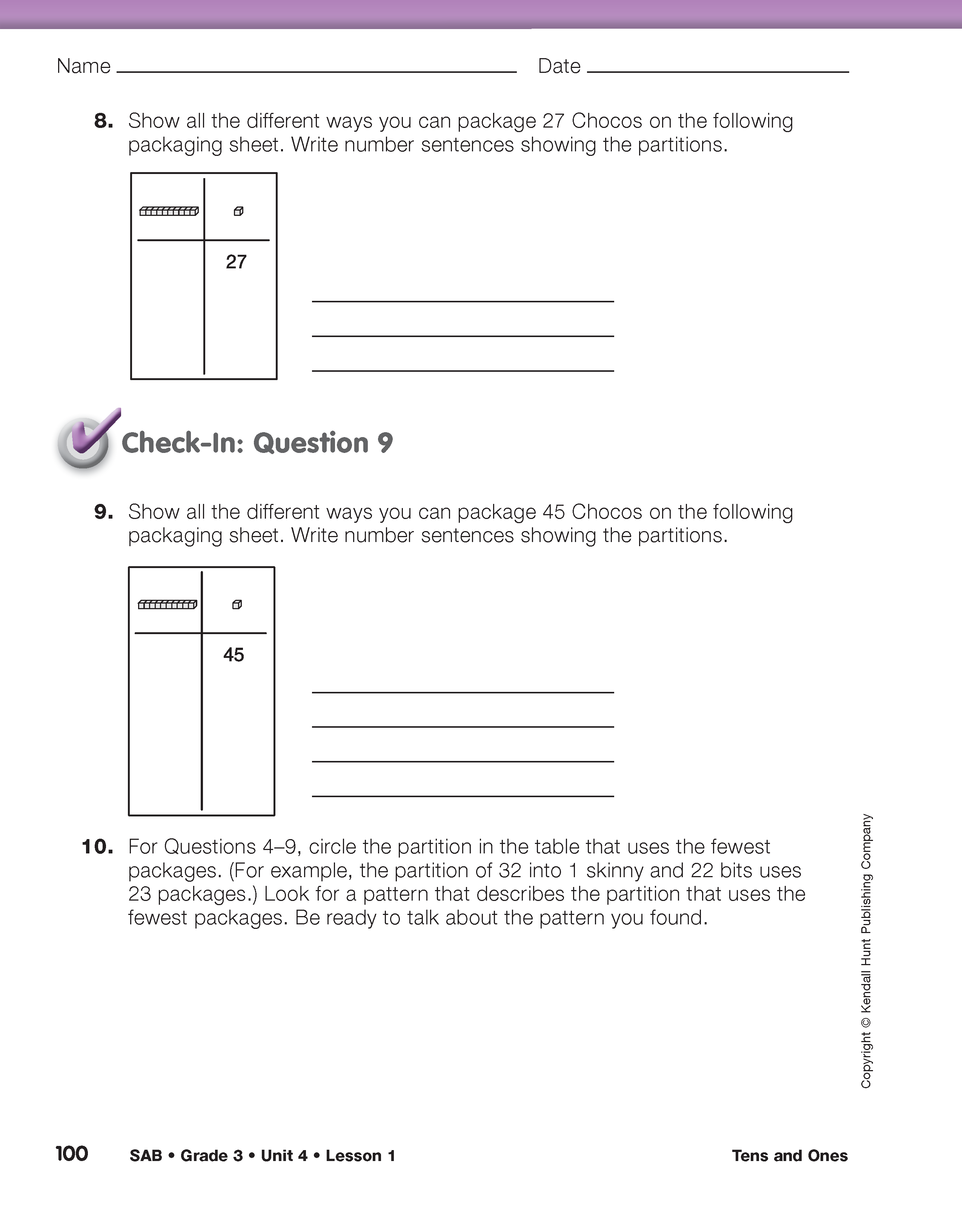Tens and Ones
Est. Class Sessions: 1Summarizing the Lesson
Use Question 10 to complete the lesson. For this question, students look over the partitions in the previous problems and see which ones have the fewest packages.
Explain to the class that the TIMS Candy Company prefers to fill orders for Chocos using the fewest packages possible (each skinny is one package, as is each bit). Instead of 10 bits, the company prefers to use 1 skinny. They package an order for 26 Chocos using 2 skinnies and 6 bits instead of 1 skinny and 16 bits or 26 bits. In the next lesson, base-ten pieces are used to represent the packages. The rule that requires them to trade 10 pieces for the next larger piece whenever possible is called the Fewest Pieces Rule.
Ask students to tell the number of packages (or pieces) used in several of the partitions in Questions 4–9. As an example, they should see that the partition of 26 into 2 kinnies and 6 bits uses 8 packages, while the partition of 26 into 1 skinny and 16 bits uses 17 packages.
Ask:
Students will notice that the partition that uses the fewest packages matches the digits in the number. For example, representing 26 with 2 skinnies and 6 bits uses the fewest packages. The number of skinnies (tens) is the same as the first digit. The number of bits (ones) is the same as the second digit.












